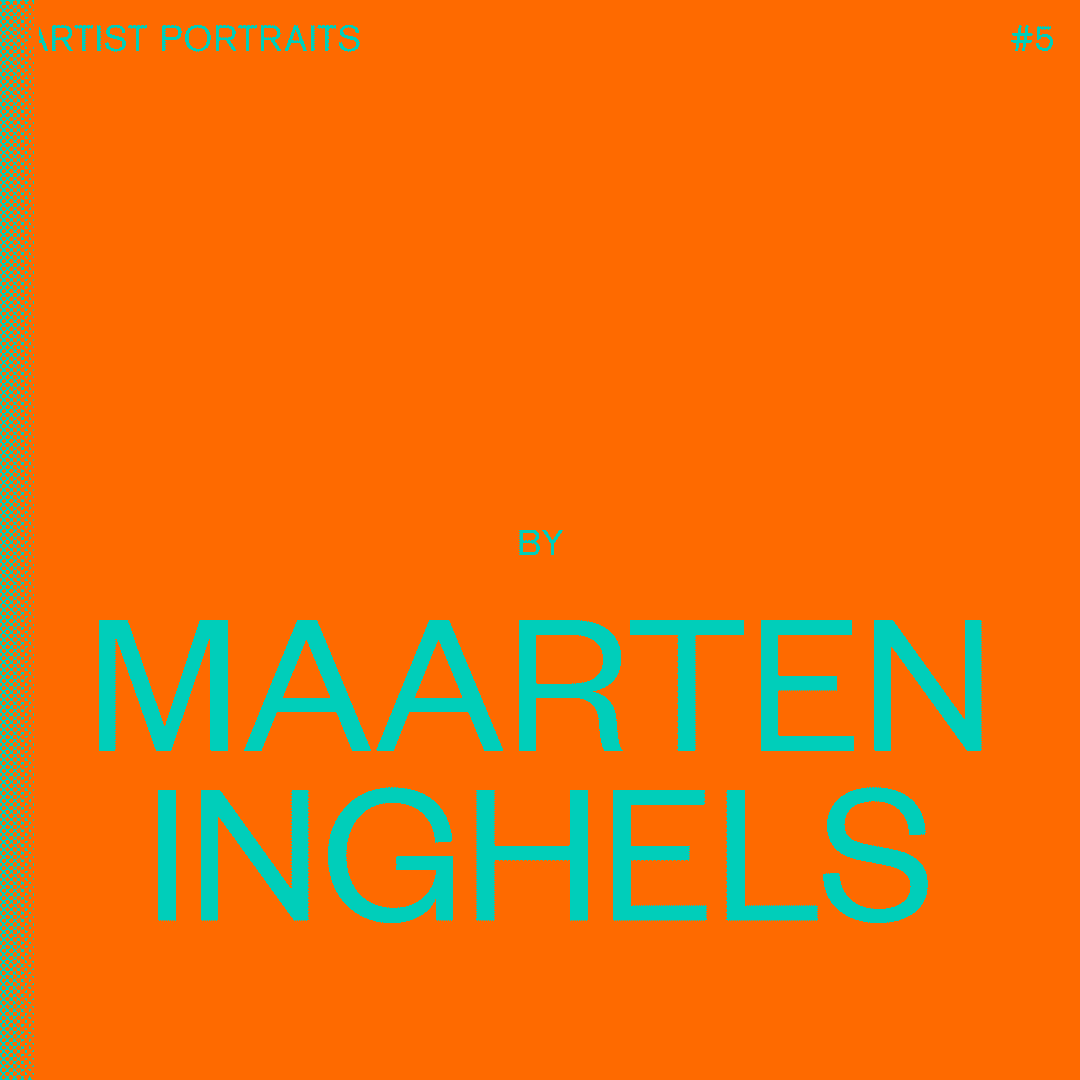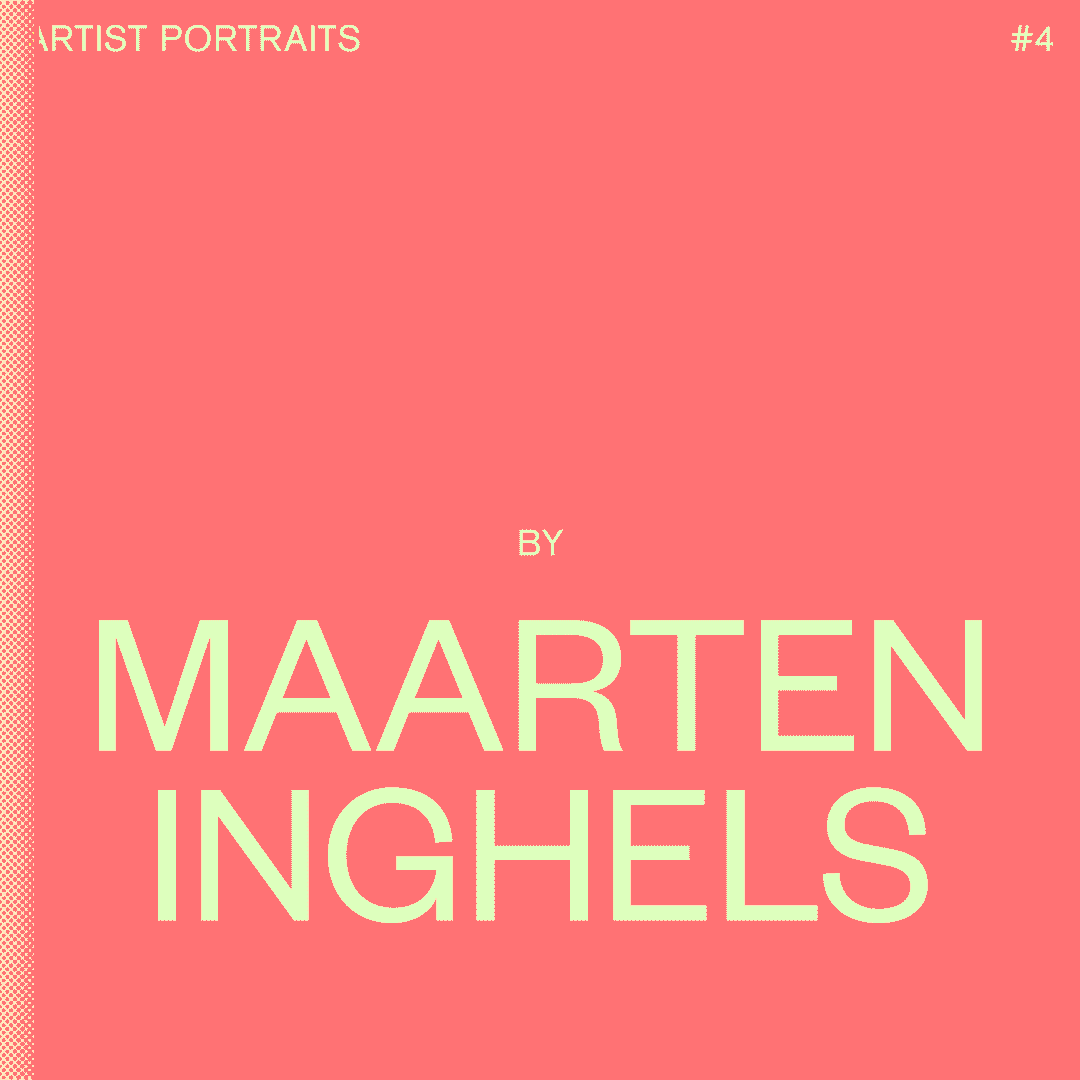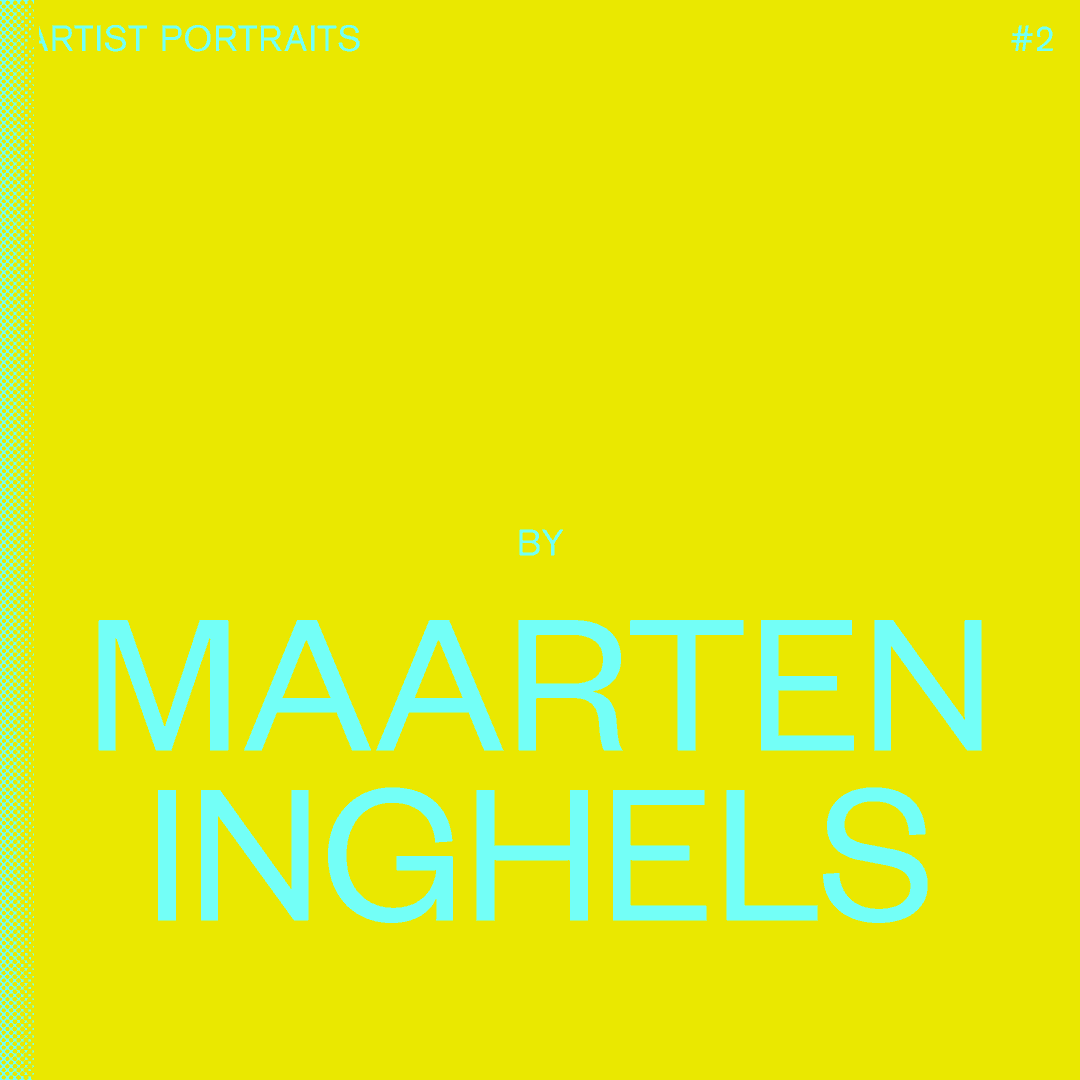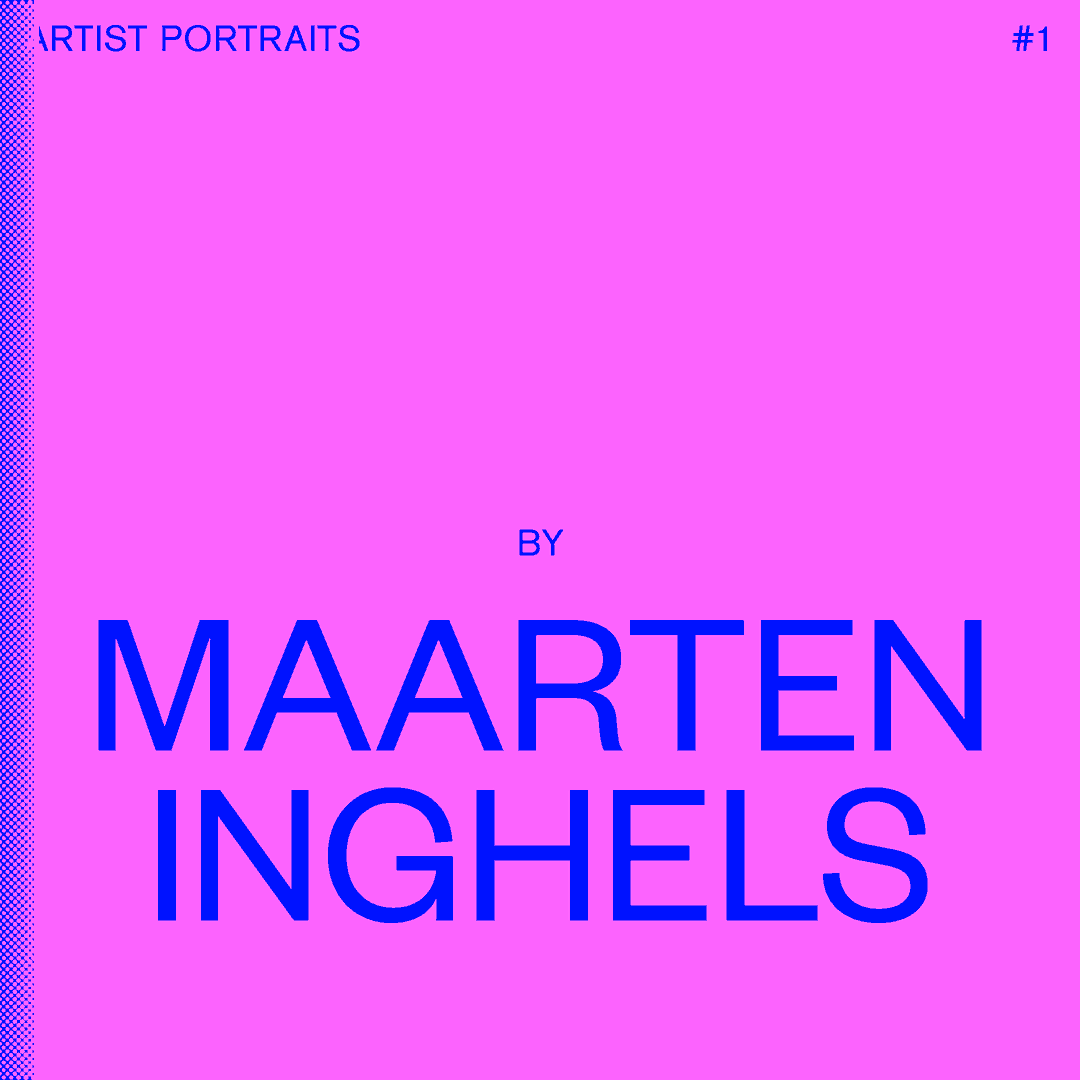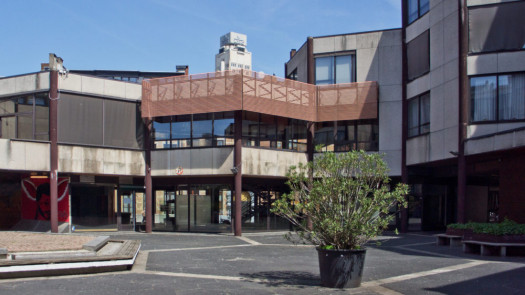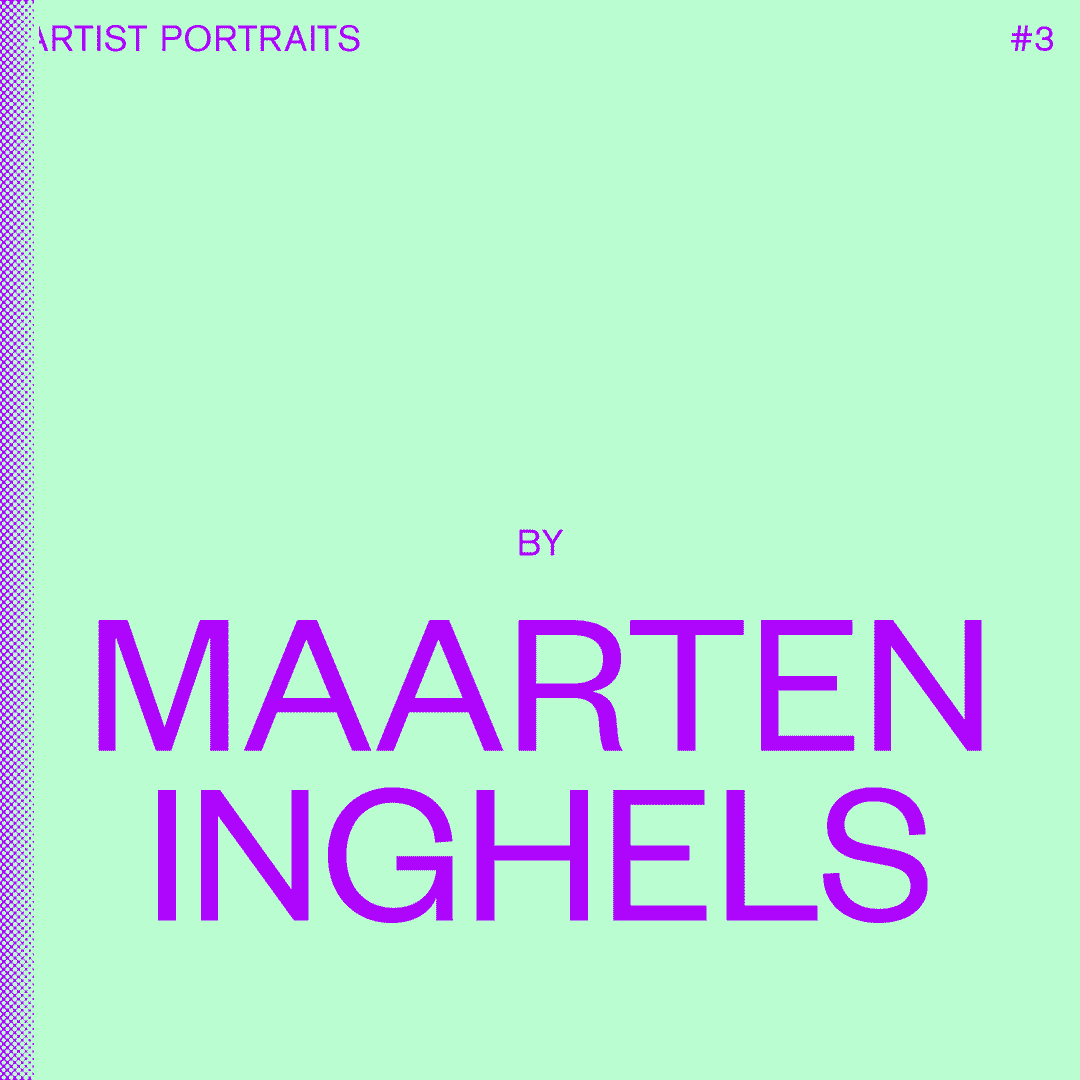
Knitting an Ending
Artist Portrait
MORPHO introduces a new series of artist portraits that brings our studio occupants into the limelight. The text is the portrait, at once of the author and the person portrayed, who are both studio occupants.
KNITTING AN ENDING
My commission was to write a portrait
of Peter Morrens, who lets himself be known
as a multimedia artist. That is to say
that in one and the same Peter Morrens,
there lurks an oil painter, an installation
maker and builder, a restorer, a curator,
and yes, even a writer (maybe a poet).
Above all, he is a draughtsman. He draws.
So I scrolled through his website, from one image
to another, which seemed to have no clear connection
between them, but they all excelled in a dark,
for me sometimes even ominous quality,
forcing me to face the fact that I actually
understand precious little of the world.
Above all, I was charmed by the use of language
in these works, plays on words, slogans,
phrases that often refer to the passage of time,
process, standstill, change, and so on. I quickly
understood that time is a key concept in his work.
That made me think of how I fill in my own day.
How many hours am I devoting to writing
my portrait of Peter Morrens, and that
in relation to the honorarium I receive for it?
The first step was to visit his recent exhibition
at Valerie Traan Gallery (45 minutes), after which
I cycled to his old studio in Merksem. The intention
was to get an impression of the space in which
he works. But Peter Morrens had forgotten his key.
While his assistant Jesse went off to fetch us
a simple sandwich lunch, the artist and I leaned
against a trimmed hedge in the Ridder van Parijsstraat
and chatted. As the baguette and cheese failed
to arrive, Peter regaled me with more and more
expansive digressions about his work, which I
unfortunately failed to note down. Stupid of me.
I recall that his sister really enjoyed his last exhibition
and that the S.M.A.K. Municipal Museum for Contemporary
Art in Ghent had recently purchased a work.
These are the kinds of details that can bring a portrait to life.
Our meeting against the hedge only lasted an hour,
because Peter Morrens ran out of time for me.
There was a storm coming and he had to move
the entire contents of his studio to a new address in Hoboken.
Two weeks later, when I made my appearance
in Hoboken for a more in-depth conversation,
Peter Morrens had unfortunately again forgotten his key,
so I was permitted only a view of the closed door
of his new, much larger studio. In an adjacent cafe,
we had a conversation that lasted for two hours,
one that I regretted having to leave because
I had to relieve the baby-sitter. Poor planning on my part.
As we sat together, Peter Morrens gave me insights
into his practice as an artist, which might best be
summarized as a perpetual negotiation with the history
of art and with his own archives. He illustrated that
with a telling anecdote. As he was clearing out
his now former studio, he rediscovered a painting
he had made when he was fourteen. He felt that
he could just as well have painted it today.
I am not telling this right. It would be better
to let him do the telling. At a certain point,
he let slip that, ‘What I make comes about because
I have been looking at art for thirty years.’
I did not have an answer to that. I have been looking
at art for, oh, let’s say fifteen years.
In that sense, Peter Morrens could be my father.
In an interview, I always look for moments of doubt
in the person I am conversing with. For Peter Morrens,
I found that moment when he talked about painting.
He said that a painting stands out two centimetres
from the wall, and for that reason it pretends to be
more than a drawing, a work on paper. What I heard
in that statement was the fear of not being taken seriously.
For years, I have been trying to be as unpretentious
as possible, and with that to free myself from the fear
of not being accepted. I told Peter that in writing
my portrait of him as an artist, I did not plan
to get lost in all kinds of academic reflections
in some incomprehensible jargon, but that
the result could just as well be a poem,
a story, or yes, even a drawing. I laughed, suggesting
that perhaps I should be interviewing Jesse, his assistant.
We left on good terms, with a good rapport.
When I got home, I had the idea of arranging
my notes on Peter Morrens in a collage of post-it notes.
I wrote out a variety of his enthusiastic and ardent statements
onto the familiar yellow sticky notes. They included:
‘I still find exhibitions a magic moment’;
‘You have to place your reservoir in front of the work,’ and;
‘I have shared my copyright with my assistant.’
I digitally scanned the little yellow sheets. In them,
given that I have a weakness for re-enactments,
imitations and doubles, and I had understood
that he observed other artists with a wink of the eye,
I saw a subtle homage or reinterpretation of his work.
The scanning took over an hour. I was anxious
about what Peter Morrens would think of my intervention.
His reaction, alas, spoke volumes. After a few days,
he finally wrote that my efforts were greatly reminiscent
of a flaccid persiflage, as if I were trying to make sushi
when a Japanese person came to visit. He would
have found far more merit in a quasi-literal representation
of our conversation, rather than this half-baked artistic expression.
For my part, I had to repress an urge to take offense
that I should have no talent for sushi and
ascribe to him an inability for self-ridicule.
I had, however, agreed with my client that
my subjects were not to be made to feel insulted.
I moreover had no desire for conflict with someone
whom I saw as a professional comrade.
I started over. Ideally, my portrait should encapsulate
the same labyrinthine qualities as the exhibitions
of Peter Morrens’ work, in which the viewer is
almost constantly being wrong-footed, directed
by misleading texts, drawings and obstacles.
I needed to write a fabulous poem with 1000 rooms,
in which readers could lose themselves. However,
as I had already occupied myself with background research,
dead-end detours, interview appointments and
various procrastination manoeuvres, the deadline
for turning in my portrait had long since passed.
I began to comprehend that everything I undertake
is subject to failure. There I sat, annoyed by the situation.
I concluded that great art is hidden in failure.
It was time to knit together an ending.
It was lunchtime. I shut off my computer.
- Author
Maarten Inghels is a writer and studio occupant with MORPHO at RAAT.
- Sitter
Peter Morrens is a visual artist and studio occupant with MORPHO at Wolkammerij.
www.petermorrens.com- Translator
Mari Shields
